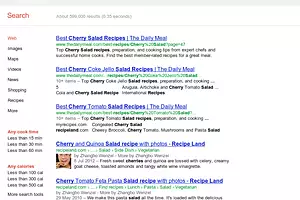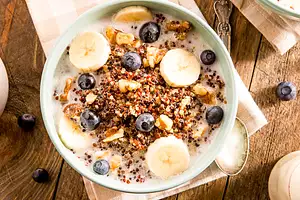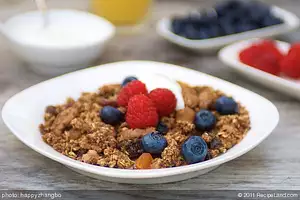Research shows that childhood obesity is on the rise around the world. In Singapore, 11% of children are currently considered obese. Childhood obesity is linked with a greater risk of adult obesity, heart disease, diabetes, cancer, and hypertension. A sedentary lifestyle, along with a diet full of foods that are high in calories and fat and low in nutrients, contributes to the risk of childhood obesity.
The Health Promotion Board and Ministry of Health have partnered to combat this disturbing trend in childhood obesity with the Healthy Eating in Schools Programme. This programme makes healthier food and beverages available to children through their school canteens. It encourages teachers, vendors, and students to work together to make healthier choices.
Schools successfully participating in the Healthy Eating in Schools programme receive the Healthy Eating in Schools award. By 2009, 87% of schools in Singapore had received this award.
The Health Promotion Board established 10 guidelines for the Healthy Eating in Schools programme. The board believes that these guidelines will have an impact on childhood obesity. With these guidelines in place, the Health Promotion Board hopes to encourage students to eat more whole grains, fruits, and vegetables and less fat, salt, and sugar.
The 10 guidelines of the Healthy Eating in Schools Programme are:
-Sell drinks and desserts containing less sugar.
-Commercially prepared drinks sold in the canteen and drinks sold in vending machines must have the Healthier Choice Symbol.
-Drinks and desserts prepared by vendors cannot contain added artificial sweeteners and their sugar content must be 7 grams or less.
-Sweetened foods cannot be used to prepare dishes.
-No sweeteners can be added to fruit juices.
-Deep-fried and preserved foods can only be sold one day each week.
-If vendors prepare food and beverages with high-fat ingredients, at least half of those ingredients need to be replaced with lower-fat ingredients. Lard, ghee, and butter are not allowed to be used to prepare food.
-Lean meat and skinless poultry should be used to prepare food.
-Include the appropriate amount of vegetables in rice dishes and noodles. Add 2 dessert spoons of veggies to rice dishes and 1 dessert spoon of veggies to noodles.
-At least 2 types of fresh fruit should be available to students each day.
-Sauces, soups, and gravies should only be added to dishes if the student asks for them. No more than 2 dessert spoons of sauce, soup, or gravy can be added to a dish
-The canteen must contain a minimum of 2 working water coolers.
-When preparing sandwiches, use 1 slice of white bread and 1 slice of wholegrain bread or 2 slices of wholegrain bread.
-Packaged snacks and desserts sold in the school canteen or vending machines must have the Healthier Choice Symbol or the Healthier Snack logo.
Studies have shown that eating habits are determined during childhood. As most students eat at least one meal in their school’s canteen every day, this is the perfect place to encourage healthy eating habits.
Both the Health Promotion Board and the Ministry of Health hope that their Healthy Eating in Schools Programme will put a stop to childhood obesity and establish a lifetime of healthy eating habits.
SOURCES: https://www.hpb.gov.sg/HOPPortal/health-article/2818; https://www.hpb.gov.sg/HOPPortal/health-article/HPB042403










Comments